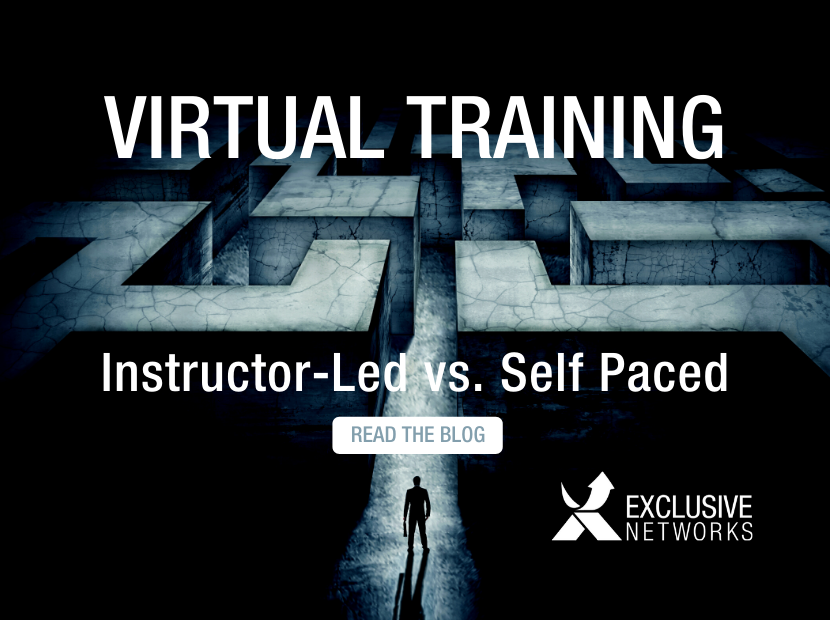
You may have noticed a lot of online virtual training courses popping up which, in the current environment, offers a great opportunity to address skills gaps. However, which method of virtual training and development is best? Self-paced or virtual instructor-led training? In this blog, we look at the major features as well as the pros and cons of each to help you to make a more informed decision on technical training.
Self-Paced Courses
The key elements include:
- Pre-Recorded Tutorials: Self-paced training uses pre-recorded material which contain the relevant course information usually, in a series of videos. These can be watched whenever a learner chooses.
- Immediate Availability: As a self-paced course presents all the information immediately to the learner, instead of over a set schedule. This can be an advantage for the individual learner if they already know part of the course due to prior training. It means they can start the training from the relevant point.
Pros
Flexible Timing, Location and Pace: This form of training presents an advantage for individuals looking to break into the IT industry and/or organisations looking to train their employees on a general subject with no timing restraints or deadlines. Self-paced courses also allow the learner to go back and repeat sections they have not understood, and each level can have an evaluation aspect to gauge understanding before the next level.
More affordable: Most self-paced training is often cheaper than instructor led.
More Accessible: Self-paced training is more accessible to the average learner and the most common method of information consumption.
Cons
No Interaction: This can be a hurdle to understanding certain aspects of a course, and with no opportunity to ask questions, it can halt training in its tracks. The format is usually short videos or PowerPoint presentations, with no live/hands-on lab experience, in IT, this limits training to theoretical rather than practical learning. It also means that a student is unable to ask about elements of the course specific to their organisation’s IT set up.
Technology Hiccups: As self-paced courses are pre-recorded; the learner may experience issues with software or platform compatibility.
Longer Completion Time: With zero interaction, it usually takes longer for a learner to complete self-paced training. Not only are they more likely to be distracted or interrupted, as they cannot ask questions to better understand learning points, they may become discouraged from continuing.
Virtual Instructor-Led Learning
The primary features instructor-led training includes:
- Live Instructor: As the name suggests, a live instructor delivers the information remotely, in real time, bringing the human element into the course, making it more natural to the typical human way of learning, in a classroom environment.
- Interactive Sessions: The human element in the virtual instructor-led training offers greater interaction between instructor and students, allowing them to ask questions and raise queries during the course. This includes discussion on real life scenarios and practical examples on how the theory covered in the course relates or applies to each student’s organisation’s environment
- More Intricate Training:Virtual instructor-led training is more intricate, with more close detail than self-paced training, which makes them perfect for training on advanced or specialist subject matter.
- High-Level: Virtual instructor-led classrooms are usually reserved for the higher-level subjects. This is especially true in the IT industry, where each subject and learning point has various levels of complication and intricacy. Subjects that are more advanced require more in-depth training, which is why instructor-led training is perfectly suited to it.
Pros
Highly Detailed Content: This course method is always more detailed and singular, which is good for a single subject that requires very in-depth training.
Exams at Course-Conclusion: The student learner does not have to commit to an exam until the course has concluded. The in-depth nature of the course can provide a great source of knowledge that the student can then put into practice to prepare for their exam and certification.
Laboratory experience: Virtual instructor-led training very often includes a virtual lab environment where students can put their learning into practice, interact and engage with the instructor asking questions specific to their IT environment for example.
Levels of Engagement: The human interaction element of instructor-led training means prompt responses to concerns, the ability to check the understanding ratio of the student and give context in conjunction with other subject matters.
Support Material: An instructor-led course usually provides a course manual as a quick reference guide to material covered on the course. Self-paced courses tend to refer to existing online product guides which can be lengthy and very dense. No context to the course material is provided.
Cons
Time constraints: Set start and finish time and dates are not always convenient and involve committing time. However, as self-paced training usually takes longer to complete, particularly in advanced subjects, blocking out time to focus on training, means they can complete it more quickly.
More Expensive: Qualified IT Instructors are well-versed in their field, which ultimately means costs apply. In a virtual environment, remember that travel and accommodation are not required on either side.
Self-paced learning has its place and is certainly useful in some circumstances. It is better suited to basic conceptual learning with instructor-led training being the best medium for advanced or technical training where professionals are looking for a serious knowledge upgrade.
In our experience, onsite training from a qualified instructor where a physical classroom envelopes you in a focused learning environment, ensuring you are protected from interruptions or distractions, offering hands on lab experience and interaction with the instructor and peers outperforms virtual training and offers a better student experience. But until our situation allows us to return to that ideal, consider the subject matter of your training, and what you want to achieve from an online course before deciding on the best format for you. If you’d like to offer training to your customers, click here for more information on how we can help.


